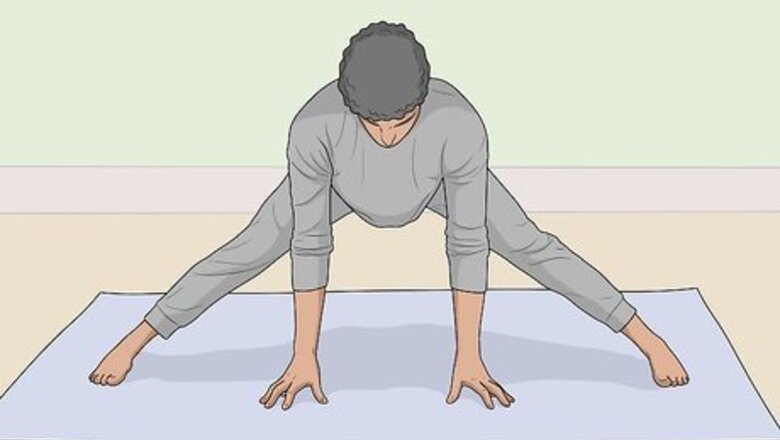
views
Doing Yoga

Use the time before class to warm up and center yourself. Yoga is all about the connection between you and your body. To get the most out of class, spend some time stretching. Focus on the sensations in your body as you do so. Concentrate on breathing deeply in and out. Taking a moment to relax and center yourself can help you to get a lot more out of your class. Check out https://www.prevention.com/fitness/yoga/morning-yoga-poses-wake-you for a list of good stretches that will get you read for class.
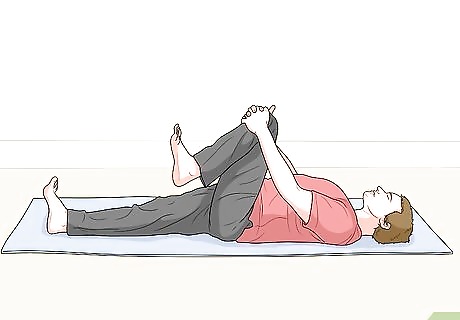
Try a variety of poses. Poses – or asanas – are the different positions you take during yoga. If you are in a class, the instructor will direct you into various positions and help you adopt the proper alignment. For a library of poses, as well as some sequences that are good for beginners, consult https://www.yogajournal.com/category/poses/ or https://www.yogabasics.com/practice/yoga-postures/. You can also try starting with these basic poses: Knees to chest (apanasana) – Lie on your back, draw both knees towards your chest, and hold your shins if necessary. Gently rock side to side to massage your lower back. Hold for 8-10 breaths. Supine twist – Start with knees to your chest. Lay your arms out to either side so you form a T. Drop your knees to the right, one stacked on the other. Hold for 4-5 breaths and then repeat on the other side. Cat-cow pose – Start on your hands and knees, with your shoulders aligned with your wrists and your hips over your knees. As you inhale, arch your spine (a concave curve - your chest should move forward and your belly toward the floor) and lift your head to look up. As you exhale, round your spine (convex curve) and lower your head to look back towards your navel. Repeat 4-5 times. Mountain pose – Stand tall with feet together, your weight even distributed on both feet, and your arms at your sides. Take a deep breath and raise your hands over your head with your arms straight and palms facing one another. Hold for 4-5 breaths, then repeat 4-5 times. Downward dog – Start on all fours with your hands aligned with your shoulders. Walk your hands forward a few inches and spread your fingers. With feet hip-width apart and knees slightly bent, press your hips towards the ceiling so that your body forms an inverted V. Hold for 3 breaths. Cobra – Start prone on your stomach, with your hands on the floor under your shoulders and your elbows tucked into your body. As you inhale, keep your pelvis touching the floor while you straighten your arms so that your torso bends backwards and your chest lifts off the floor. Hold for 4-5 breaths. Child's pose – A good pose to end on. With your big toes pointed and touching, sit back on your heels, then stretch out forward with your arms straight so that your fingertips, forehead, and knees are touching the floor. Breathe deeply.
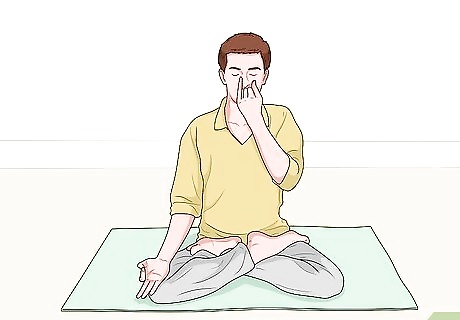
Concentrate on your breathing. Yoga uses a technique of controlling breathing, or pranayama, which is just as important as the poses you adopt. There are many types of breathing used during yoga; for a complete guide to pranayama consult https://www.yogajournal.com/category/poses/types/pranayama/. The basic three types you will need are: Quiet breathing (natural without effort) – It is typically used during the ending period of relaxation and meditation. Deep breathing (long, deep breaths) - Yoga that focuses on relaxation, or during which the poses are held for a long time, often emphasizes deep breathing. Fast breathing (a deliberate increase in breathing rate) - More exercise-focused yoga that moves quickly from poses to pose often incorporates more fast breathing.
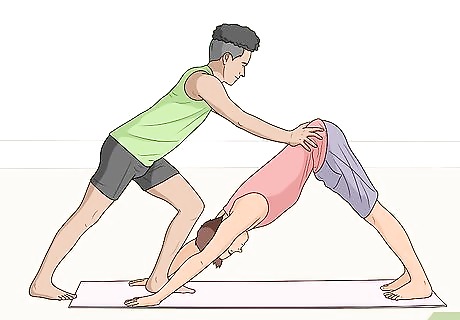
Be aware that teachers might touch you to get you into proper alignment. Teachers often move through the class, helping to guide student's bodies into the proper alignment during poses. It is fine if you do not wish to be touched. Simply let the teacher know.
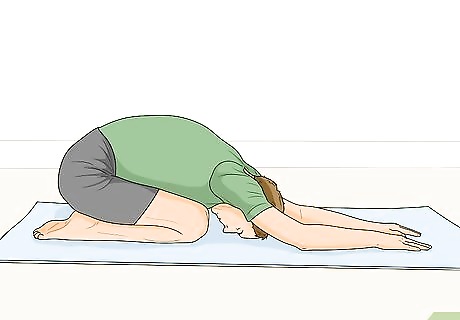
Use the child's pose if you need to take a break. You don't have to perform every pose during a class. If you feel light-headed or your muscles are shaking, it is best to take a break by assuming the child's pose: point your toes as you sit back on your heels, then reach forward with your arms straight out so that your fingertips, knees, and forehead are all touching the mat.
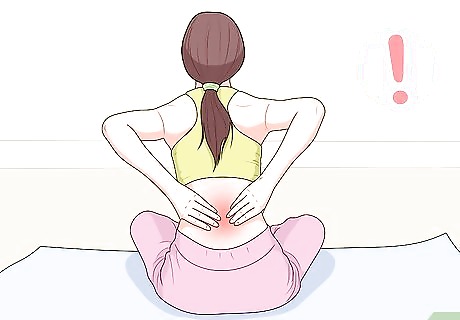
Stop immediately if a pose causes pain. Yoga might be hard, but it shouldn't hurt. If you feel a sharp pain, twinge, or tear, then stop the pose you are in. You can assume the child's pose and then try the next pose. If the pain continues after you stop the pose, you should leave the class and seek medical attention if necessary.
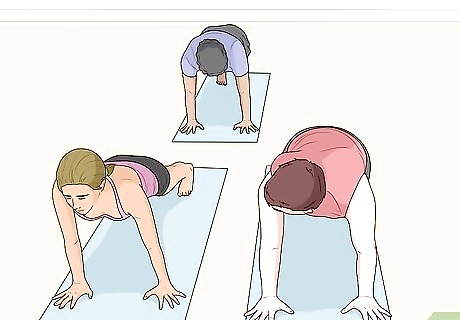
Do not compare. Some people in your class will be more flexible. Some will be stronger. Don't worry about it. The goal of yoga is not to be "better." Remember why you are there, whether for exercise, relaxation, spiritual awakening, or all of the above. None of these goals are helped by comparing yourself to others.
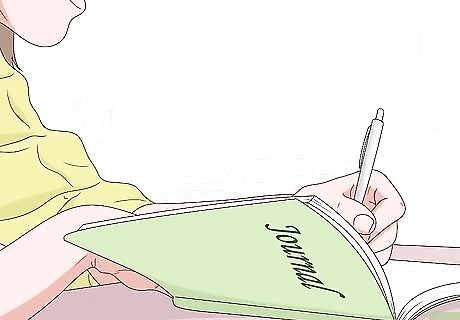
Keep a practice journal. Whether you are doing yoga alone at home in a studio, a journal is a great place to keep track of your progress, list the poses that you've learned, and write down any "aha" moments you might have had during meditation.
Choosing a Type of Yoga
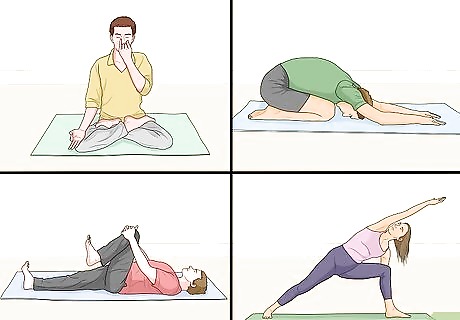
Consider the many types of yoga. There are a number of ways of doing yoga: by yourself or in a class; quick or slow; in a hot room; focused on relaxation or power. In addition, different schools of yoga favor different sequences of poses. The type of yoga you choose will depend on how advanced you are, what you hope to accomplish, and personal preference.
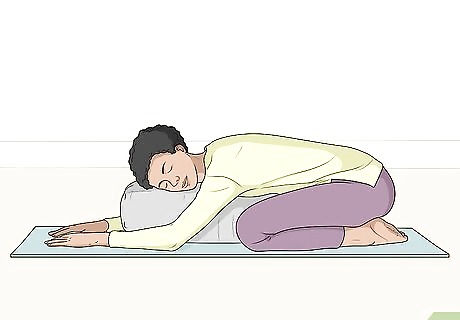
Pick a lower intensity type of yoga to relax and recover. If you're a beginner worried about being able to do the poses, or if you want a workout that relaxes you more than energizes you, you'll want to choose one of these schools: Restorative (focus: relaxation) – Blocks, blankets, and bolsters are used to support your body during poses so that you can allow your muscles to relax. Svaroopa (focus: relaxation) – Great for beginners, svaroopa uses chair poses and props in a relaxing form of yoga focused on releasing tension. Ananda (focus: meditation) – Ananda uses gentle postures and controlled breathing to prepare you for meditation. Hatha (focus: relaxation and meditation) – Hatha combines postures, pranayama (regulated breathing), and meditation into a relaxing exercise that moves slowly and does not require holding poses too long. Kripalu (focus: relaxation; self-awareness) – The focus is not on precision, but rather on holding poses for an extended time while you explore the sensations of your body and mind. Beginners focus on learning the poses. For expert practitioner, kripalu is meditation in motion.
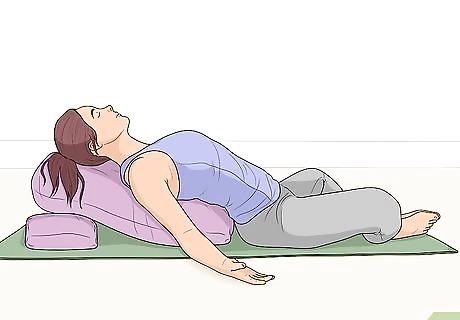
Try yin yoga to improve flexibility. Yin yoga involves using props to help you relax into postures that you hold for 5 to 20 minutes. It is a meditative form of yoga that will help improve your flexibility.
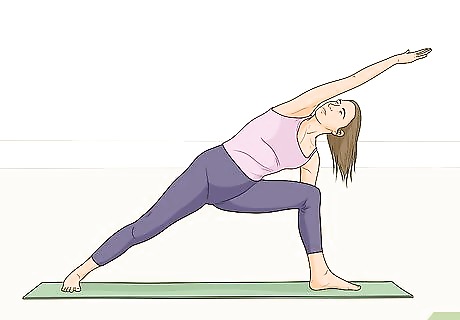
Choose a more intense form of yoga if what you are after is improved strength and endurance. Fans of high intensity interval training (HIT), running, or biking might want to try a yoga class that moves quickly from pose to pose, getting your heart rate up and providing a good cardio workout. Iyengar (focus: precision of poses; endurance) – Ideal for beginners and experienced yogis alike, iyengar focuses on perfecting poses. Props like blocks and blankets are used to make sure your body is in perfect alignment. Poses are held for a long time, building endurance. Vinyasa (focus: cardio) – Classes involve a 90-mintues sequence of poses that link breathing and movement in a way similar to dance. If you like pumping music and a racing heart, this is the yoga for you. Power (focus: cardio; strength) – It's exactly what it sounds like: yoga for people who are looking for a workout, not spiritual enlightenment. Power yoga combines traditional yoga poses with postures taken from calisthenics – i.e. push-ups, handstands, toe-touches, and side bends. There are no pauses between poses in this high-paced, intense form of yoga. Bikram (focus: strength; endurance; flexibility; weight loss) – Bikram involves a fixed sequence of 26 poses and two breathing exercises performed over a 90 minute period in a room heated to 105 degrees with 40% humidity. The idea is to build strength and endurance while sweating out toxins. The fixed sequence makes it easier to learn for beginners. Ashtanga (focus: strength; endurance; flexibility) – Ashtanga involves six series of specific yoga poses performed continuously. This is a physically demanding form of yoga that is not for beginners.
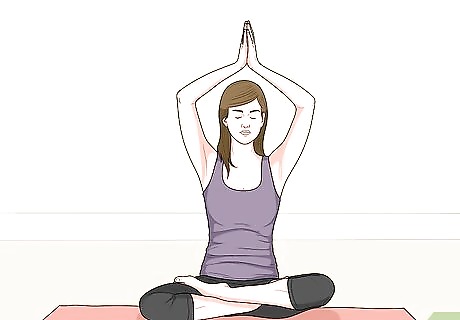
Practice one of the spiritual forms of yoga if you're after more than just a workout. Kundalini (focus: spiritual elevation) – 90 minute classes incorporate poses, challenging breathing exercises, meditation, and movement-oriented postures, along with chanting and singing. These classes are meant to challenge you physically in order to help you awaken the energies that will elevate you spiritually. TriYoga (focus: strength; spiritual awakening) – If you like losing yourself in dancing, this is the practice for you. TriYoga is similar to Kundalini, minus the chanting and singing. It is a flowing, dance like practice that combines movement, poses, breathing exercises, and meditation. Forrest (focus: strength; emotional exploration) – Developed by Ana Forrest, this challenging form of yoga mixes sequences that flow quickly from pose to pose with periods of emotional exploration. Integral (focus: strength; self-realization) – It combines poses, breathing exercises, meditation, chanting, prayer, and self-inquiry to cultivate a strong body, clear mind, and life full of joy. ISHTA (focus: spiritual growth) – It uses postures with very specific alignments, breathing exercises, meditation, and visualization to open energy channels. Jivamukti (focus: spiritual growth) – If you're dedicated to animal rights or other forms of activism, this is the yoga style for you. It embraces the ethical aspect of yoga. It combines challenging sequences of poses with scriptural study, Sanskrit chanting, vegetarianism, non-violence, music, and meditation.
Getting Ready
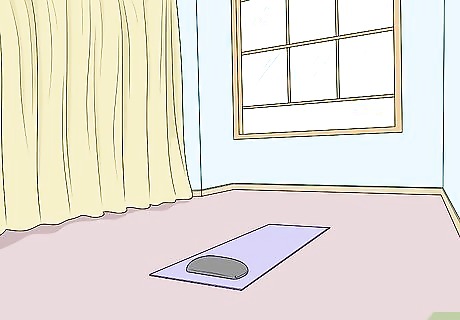
Create a quiet, comfortable space. If you are doing yoga in a class, the studio will provide this space. If you are practicing at home, you'll want to choose a quite, non-cluttered space that is large enough to spread out your mat, and which has no sharp edges nearby.
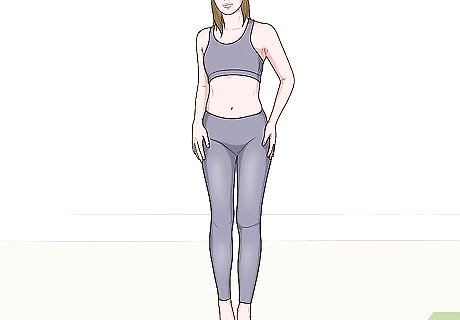
Get the right clothes. You'll want something that is comfortable and allows you to move. This can be leggings, shorts, tank tops, t-shirts, or a sports bra. Cotton is good for normal classes, but for hot classes, you'll want to be wear a fabric that wicks away sweat. Pants - Most women prefer leggings, but tight shorts also work. Men typically wear tight shorts. Shirt – Fitted tank tops and sports bras offer freedom of movement. Men sometimes choose to wear no shirt, particularly for hot yoga. Men – Wear underwear. Boxer briefs are usually preferred.
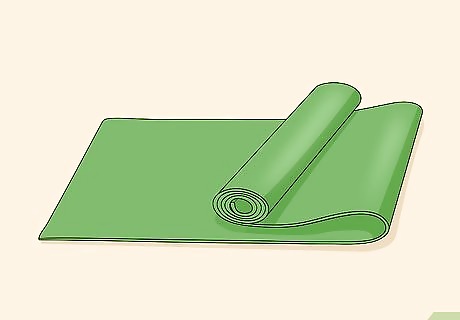
Buy a yoga mat. Any type of yoga mat will work. That said, there is now a variety of choice – thickness, texture, color, softness, price – so there's no reason not to get the mat that's just right for you. Thickness – Mats typically come in three thicknesses: ¼ inch, ⁄8 inch (0.3 cm), and 1/16 inch. Most people will want a ¼ inch mat, as they are more comfortable, but advanced yogis may opt for a ⁄8 inch (0.3 cm) mat that gives greater stability in difficult poses. ⁄16 inch (0.2 cm) mats are mostly for travel; they can easily be folded and put in a suitcase. Materials – The material will decide how spongy, sticky, and durable your mat is. PVC is the standard material, offering good give, grip, and endurance. There are also more eco-friendly mats made of recycled rubber (avoid if you have a latex allergy), or jute and cotton (these last two are less soft). Price – You can get a simple ¼ inch PVC mat for $20-$30. You'll pay more for patterns, designs, antimicrobial treatments (worth it if you don't clean your mat regularly), and textures. Eco-friendly mats generally cost more.

Pack a towel. Yoga is exercise, and exercise means sweat. For room-temperature yoga, you'll want a small towel you can use to wipe off your mat if it gets sweaty. For hot yoga, a towel is absolutely vital. You'll want one large enough to cover your mat so that sweat won't cause you to slip and slide.
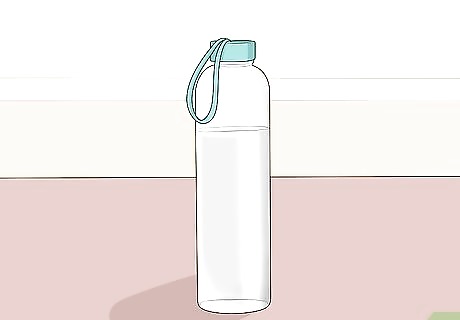
Bring plenty of water for hot yoga. While you can drink water during regular yoga, it can fill the stomach and make forward bends and twisting postures uncomfortable. In hot yoga, you need it to stay hydrated. For hot yoga, you can also try to drink plenty of water the day before so you are hydrated going into class. Don't drink coffee, tea, or soft drinks for a few hours before hot yoga, as caffeine can both dehydrate you and elevate your heart rate.
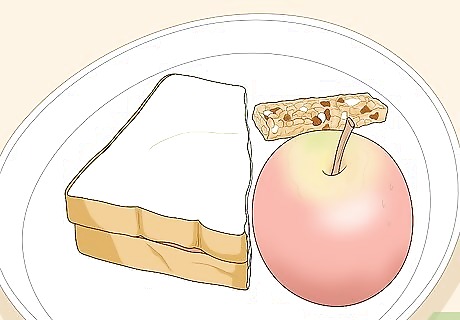
Do not eat too much before class. A light snack – fruit, a granola bar, half a peanut butter sandwich – eaten 1-2 hours before class can give you extra energy. Don't eat right before class, and if possible don't eat a big meal within 2 hours of class.
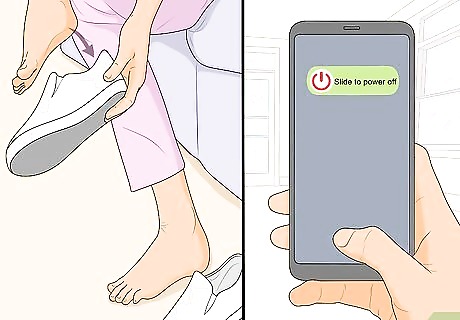
Know your yoga etiquette. If you don't want to stand out in a bad way at your yoga class, there are a few simple rules you'll want to follow: Take off your shoes – Yoga is practiced barefoot. Arrive early – You need to show up at least 5 minutes early to set up your mat, stretch, and prepare mentally. This will also ensure you get a good spot. Yoga classes can be crowded. Respect other's space – Don't place your mat directly in front or behind someone else. Stagger your mat, both so everyone can see the teacher, and so no one ends up staring at your butt. Be quiet – People will be meditating or stretching. Enter and leave quietly. Yoga class is not the place for conversation. Turn off your phone – Don't be that person. Gather equipment – If there are blocks, straps, or blankets, get some. Take two blocks, one strap, and a couple of blankets. These props can help you get in the right position during poses. Shavasana – This is the last, resting pose that most classes end with. Lying with your head towards the front of the class during this pose shows respect for your teacher.



















Comments
0 comment